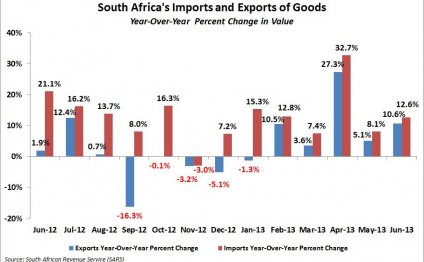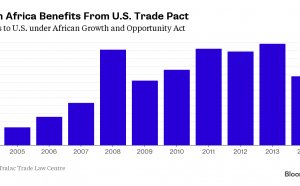
SA imports and exports
South Africa's liberal trade incentives are aimed at encouraging economic growth and development. It is a member of the World Trade Organisation (WTO), and the Southern African Customs Union, which allows free exchange of trade between South Africa and the other four countries Botswana, Lesotho, Namibia and Swaziland. Imports are a crucial part of the economy. Most companies rely on them for initial capital equipment as well as for production materials and supplies. Imports are controlled and administered by the International Trade Administration Commission of South Africa and the South African Revenue Service.
International Trade Administration Commission
The International Trade Administration Commission of South Africa (ITAC), a legislative body, aims to foster economic growth and development by administering international trade. Its core functions include customs tariff investigations; trade remedies; as well as import and export control.Trade agreements
South Africa is a member of the World Trade Organisation, and follows the Harmonised System of import classification, which means it uses the World Customs Organisations standardised system of code numbers for identifying products. South Africa is a signatory to many agreements with its trading partners among them the African Growth and Opportunity Act, and the Generalised System of Preferences. South Africa also has a Free Trade agreement with the European Union, the Southern African Development Community, Mozambique and Zimbabwe.Southern African Customs Union
The Southern African Customs Union (SACU) is a customs union among five countries of Southern Africa: Botswana, Lesotho, Namibia, South Africa and Swaziland. Established in 1901, it is the world's oldest customs union. Member states form a single customs territory, and tariffs and other barriers are eliminated on the trade for products originating in these countries. A common external tariff applies to countries that are not members of SACU. Since 2008, a trade agreement has been in place between the SACU and the European Free Trade Association, which comprises Iceland, Liechtenstein, Norway and Switzerland. This facilitates trade in industrial products, fish and other marine products, as well as processed agricultural products.Import control
Most goods may be imported into South Africa without restrictions. However, there are some such as used or secondhand goods which are subject to import permits. For goods subject to restriction, importers must have the required permit before shipping. The ITAC is responsible for issuing permits. Sometimes authorisation may also be required from other departments with jurisdiction over the control of the goods in question, such as the Department of Agriculture. Permits are generally valid for 12 months.Customs and border management
The South African Revenue Service (SARS) oversees the flow of goods into South Africa. All goods (wares, articles, merchanidise, animals, currency) entering the country must be declared on the prescribed bill of entry. If you plan to import goods, you must register with the Commissioner of SARS as an importer. Import tariffs are levied at the first point of entry in the South African Customs Union. SARS is also responsible for levying these duties, which include: customs duties (including additional ad valorem duties on certain luxury or non-essential items); anti-dumping and countervailing duties; and VAT (which is also collected on goods imported and cleared for home consumption).
Source: www.southafrica.info
RELATED VIDEO

GTA: San Andreas - Import/Export (List 3) Freeway (HD)

GTA San Andreas IMPORT/EXPORT Lista 2

GTA San Andreas - Import/Export Vehicle #18 - Slamvan
Share this Post
Related posts
South African exports and imports
APRIL 15, 2025
The Trade, Development and Co-operation Agreement has established a free trade area that covers 90% of bilateral trade between…
Read MoreCountries imports and exports
APRIL 15, 2025
Defence trade rose by 13.4 per cent to $64.4 billion, or £42.8 billion, at the time of research. So which countries were…
Read More










